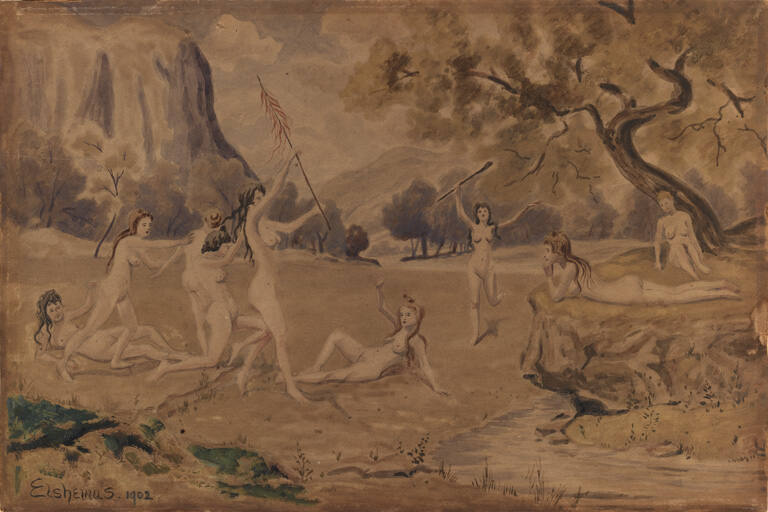
Object Details
Culture
Japan
Edo period
Date
18th century
Medium
Six-fold screen: ink, colors, and gold leaf on paper
Dimensions
65 3/8 x 150 inches (166.1 x 381 cm)
Credit Line
Gift of Robert J. Smith, PhD 1953, and Kazuko Smith
Object
Number
76.062
This screen shows a group of peasants dancing in the rice fields as the harvest is completed and a g(…)
This screen shows a group of peasants dancing in the rice fields as the harvest is completed and a glimpse of an aristocratic household in the background. Such subject matter comes out of Chinese Confucian moral traditions to remind wealthy patrons that they are dependent on the work done by farmers and laborers. In Japan, such scenes are also appreciated for their seasonal significance. This screen might originally have been the left of a pair; the right screen perhaps showed scenes of rice planting in spring.Screens functioned in aristocratic households to subdivide larger architectural spaces for purposes of privacy, to reduce drafts (from which the Japanese term for screen, byobu, meaning “wind protection,” derives), or to conceal functions such as food preparation from view. Screens also served as backdrops for ceremonies or entertainment. Most screens were made in pairs that together form a complete composition or present complementary scenes of a theme.












